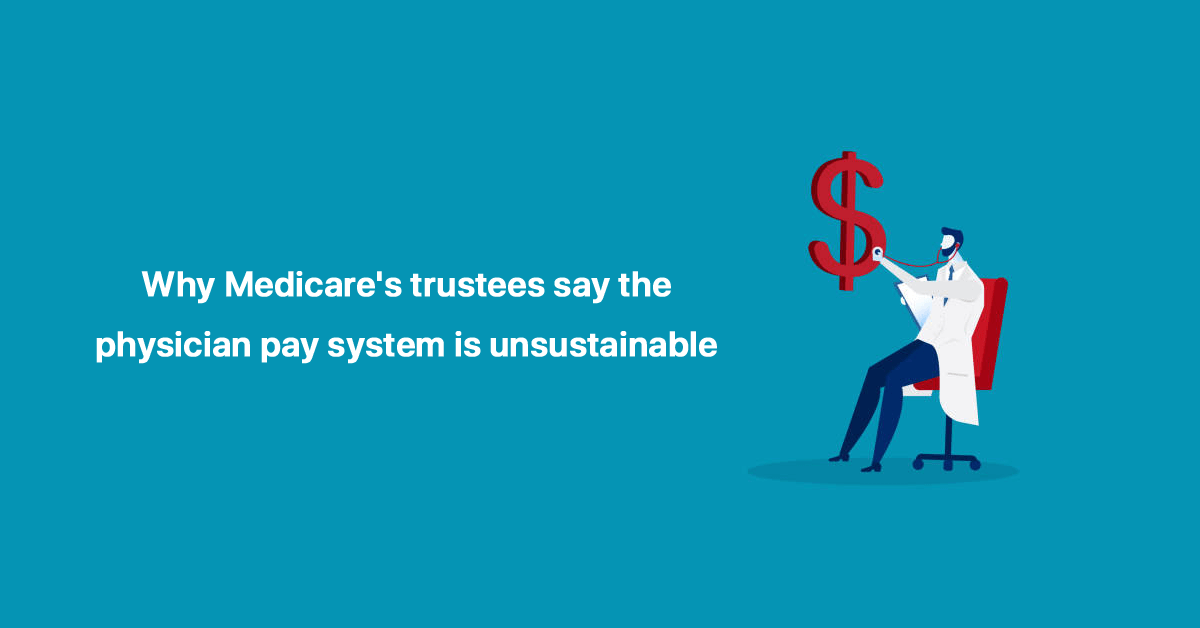Medicare’s trustees have issued a report (PDF) that reckons with the consequences that patients could face as a result of the physician payment system’s long-term unsustainability.
Your Powerful Ally
The AMA helps physicians build a better future for medicine, advocating in the courts and on the Hill to remove obstacles to patient care and confront today’s greatest health crises.
Join the AMA
The report this month from the Boards of Trustees of the Federal Hospital Insurance and Federal Supplementary Medical Insurance Trust Funds says the system put in place by the Medicare Access and CHIP Reauthorization Act (MACRA) did help avoid “the significant short-range physician payment issues resulting from” the flawed sustainable-growth rate (SGR) formula.
But, the trustees wrote, MACRA “nevertheless raises important long-range concerns that will almost certainly need to be addressed by future legislation.”
Leading the charge to reform Medicare pay is a core element of the AMA Recovery Plan for America’s Physicians. You took care of the nation. It’s time for the nation to take care of you. It’s time to rebuild. And the AMA is ready.
The AMA has challenged Congress to work on systemic reforms and make Medicare work better for you and your patients. Our work will continue, fighting tirelessly against future cuts—and against all barriers to patient care.
The Medicare trustees’ report notes that “additional updates totaling $500 million per year and 5% annual bonuses are scheduled to expire in 2025, resulting in a payment reduction for most physicians.”
MACRA also “specifies the physician payment updates for all years in the future, and these updates do not vary based on underlying economic conditions, nor are they expected to keep pace with the average rate of physician cost increases,” the report says. “The specified rate updates could be an issue in years when levels of inflation are high and would be problematic when the cumulative gap between the price updates and physician costs becomes large.”
By 2048, the trustees estimate, physician payment rates under MACRA will be lower than they would have been under the SGR formula, and about 30% lower by end of the period projected.
“Absent a change in the delivery system or level of update by subsequent legislation, the trustees expect access to Medicare-participating physicians to become a significant issue in the long term,” says their report to House Speaker Nancy Pelosi and Vice President Kamala Harris.
How to overhaul the payment system
“Medicare trustees acknowledged that patients will face limited access to Medicare-participating physicians because of the long-term growing financial instability of the Medicare physician payment system,” said AMA President Gerald E. Harmon, MD. “The AMA welcomes this recognition and urges Congress to work with physician stakeholders to put the payment system on a sustainable path.”
The AMA and 120 state medical and national specialty societies have endorsed a set of 10 principles that should guide Congress as lawmakers ponder a much-needed remedy for the financial instabilities that are affecting physician practices due to the pandemic, statutory payment cuts, lack of inflationary updates and significant administrative burdens.
According to the principles outlined in “Characteristics of a Rational Medicare Physician Payment System” (PDF), Congress should aim for simplicity, relevance, alignment and predictability for physician practices and the Centers for Medicare & Medicaid Services (CMS).
“This represents the first stage in our work to develop substantial changes to the payment system to improve the financial viability of physician practices and ease its administrative burdens,” Dr. Harmon said. “Fiscal uncertainty is the only sure thing given the pandemic, statutory payment cuts, growing practice costs and administrative burdens. This report is a wake-up call. We should not hit the snooze button.”
Adjusted for inflation in practice costs, Medicare physician payment fell 20% from 2001 to 2021, and without an inflation-based update, the gap between frozen physician payment rates and rising inflation in medical practice costs will widen. The Medicare payment system is on an unsustainable path threatening patient access to physicians.
The AMA will continue to work with the Federation of Medicine to develop detailed solutions to the systematic problems with the Medicare physician payment system and preserve patient access to care. The AMA is building awareness of the problems with the current system with members of Congress to build interest and support for needed reforms.
For More Information: https://www.ama-assn.org/practice-management/medicare-medicaid/why-medicares-trustees-say-physician-pay-system-unsustainable



